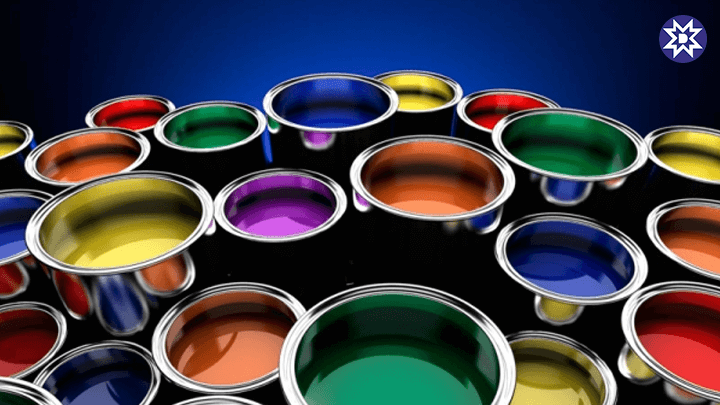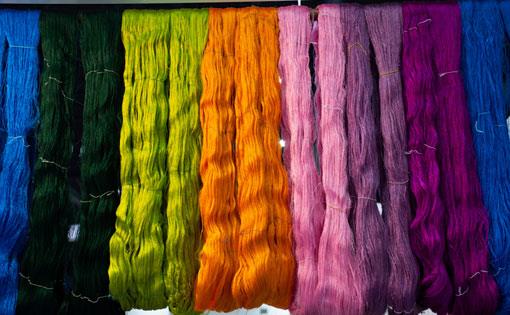
Azoic Dyes
Azoic dyes are synthetic colorants formed directly on the fiber through a coupling reaction between a diazo component and a coupling component (naphthol). They are widely used on cellulosic fibers like cotton and rayon, where they develop bright and vibrant shades such as reds, oranges, and yellows. The dyes are created *in situ* on the fabric, making them water-insoluble once developed. This internal formation leads to excellent wash and light fastness, especially for decorative, traditional, and printed textile applications.
| Property | Chemical Details | Application Info | Compatibility | Fastness | Standards & Storage |
|---|---|---|---|---|---|
| Product Type | Fast Red B + Naphthol AS-G | Azoic dye formed on fiber | Cotton, Rayon, Viscose | Wash: 4–5 Light: 5–6 |
Keep diazo & base separate Dry storage only |
| Reaction Mechanism | Diazotization + Coupling | Cold or lukewarm application | Only with cellulosics | Bleach Resistance: Low | Shelf Life: 12–18 months |
| Fixation Type | In-fiber Coupling | No external fixers needed | Requires base + diazo agent | Rubbing Fastness: 3–4 | Avoid humidity exposure |
| Temp. Requirement | 20°C – 30°C | Cool bath for coupling | Not suited for synthetics | Heat Stability: Moderate | No storage under 5°C |
| Application Segment | Handlooms, Printing | Batik, Traditional Art | Used in small-batch dyeing | Durability: Good | Keep away from sunlight |
| Form & Solubility | Powder (reactive on fiber) | Soluble when used separately | No solubility in final dye | Bath Stability: Stable | Do not pre-mix components |
| Product Name | Chemical Class | Dyeing Temp (°C) | pH Range | Fixation Method | Common Applications |
|---|---|---|---|---|---|
| Fast Red B + AS-G | Azoic (Diazo + Coupler) | 20 – 30 | 9.0 – 10.0 | In-situ Coupling | Cotton printing, batik |
| Fast Orange GC + AS-BO | Azoic Naphthol | 20 – 25 | 8.5 – 10.5 | Diazotization + Coupling | Yarn dyeing, tie-dye |
| Fast Blue B + AS-LC | Naphthol Base | 22 – 30 | 9.0 – 10.0 | Cold coupling process | Apparel printing |
| Fast Garnet GBC + AS-TR | Diazo Component | 25 – 30 | 8.0 – 9.5 | Low-temp development | Traditional fabrics |
| Fast Black K + AS-ITR | Azo Complex | 20 – 30 | 8.5 – 9.5 | Two-bath coupling | Decorative textiles |
Azoic dyes, also known as naphthol dyes, are formed directly on the fiber through a two-step process involving coupling of diazo and coupling components. These dyes are mainly used on cellulose fibers like cotton and produce bright, fast shades such as reds, oranges, and yellows. Unlike conventional dyes, azoic colors are developed inside the fiber structure through chemical reaction, providing excellent fastness properties.
The dyeing process begins by treating the fabric with a naphthol base (coupling component), followed by immersion in a diazotized amine solution. The in-situ coupling reaction forms the insoluble azo dye inside the fiber. This process typically operates at low temperatures (20°C–30°C) in mildly alkaline conditions. Commonly used bases include Naphthol AS-G, AS-BO, and diazo components like Fast Red B, Fast Orange GC.
Azoic dyes offer good wash and light fastness, and are widely used for traditional printing, batik, and decorative fabrics. Their application requires precise control over pH and timing to ensure reproducible shades. Storage should be dry and cool, and components must be handled separately to prevent premature coupling. Despite some environmental limitations, azoic dyes remain valuable for brilliant, long-lasting textile coloration.
Our Lab Gallery

If you would like to get in touch with JP Global, there are several convenient ways to reach out. You can contact us directly via phone or email for any inquiries, partnerships, or support. Additionally, our contact form on the website allows you to submit your queries quickly. For urgent matters, we recommend calling during business hours. Follow us on social media for updates, or visit our office at the listed address to speak with our team in person.
You can view the complete list of our products by visiting the "Products" or "Catalog" section on our website. We regularly update this section with the latest offerings, specifications, and availability. If you prefer, you can also request a digital or printed catalog by contacting our support team via email or phone. For bulk or customized product inquiries, our sales team is always ready to assist you directly.
JP Global collaborates with a wide range of trusted industrial partners across various sectors including manufacturing, logistics, energy, and technology. Our key partners include leading suppliers, global manufacturers, and certified service providers who share our commitment to quality, innovation, and customer satisfaction. These collaborations enable us to deliver reliable solutions and maintain high industry standards in every project we undertake.





















